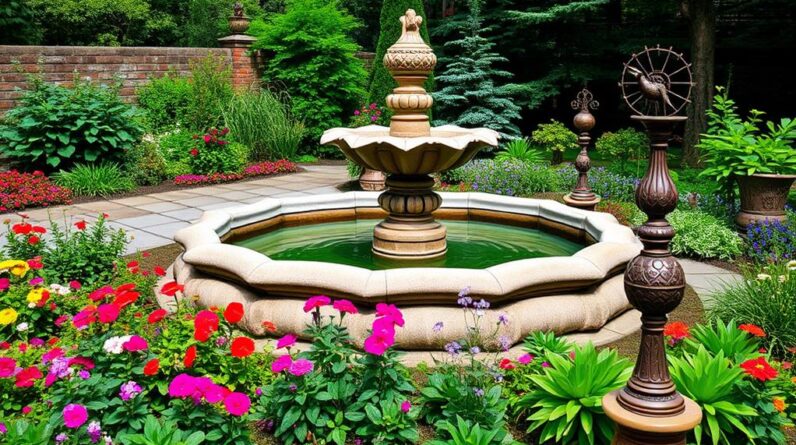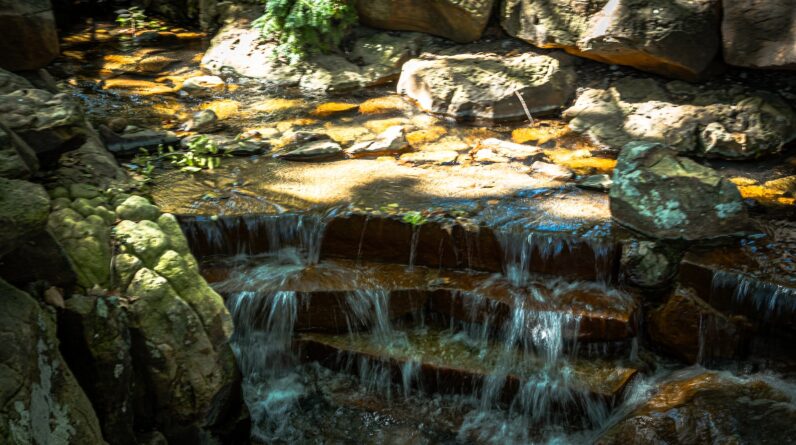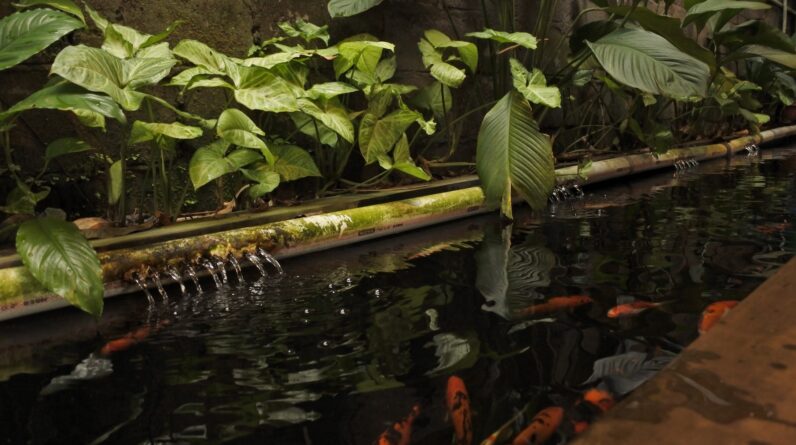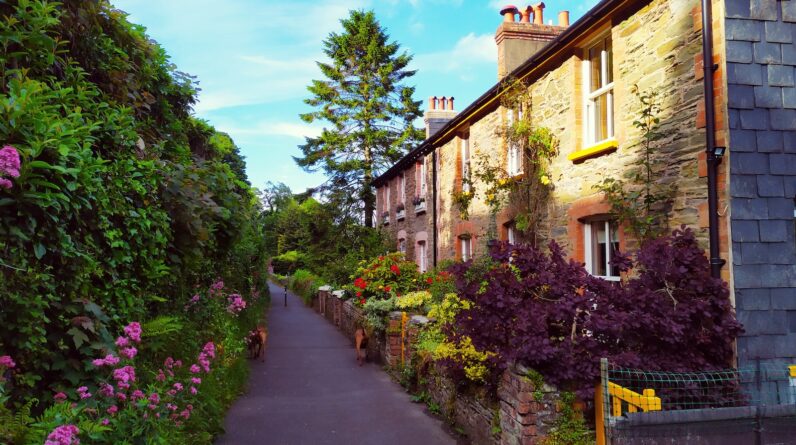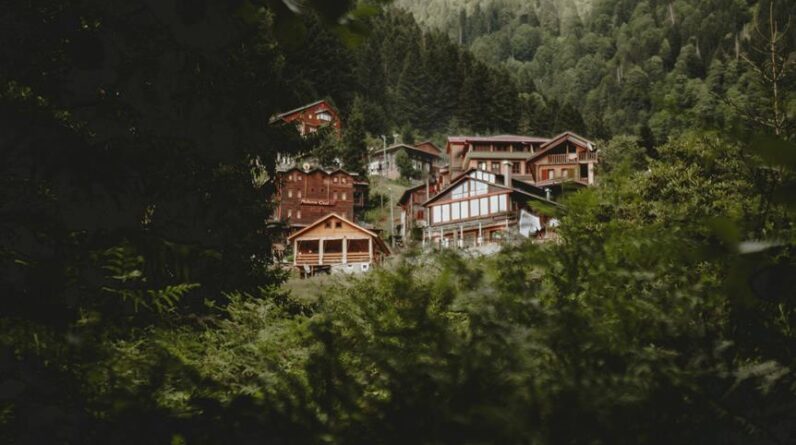
Imagine stepping into a world where landscapes come alive with innovation and modern design. Welcome to the realm of contemporary landscape architecture, where sustainable materials and cutting-edge techniques combine to create breathtaking outdoor spaces.
Here, technology seamlessly integrates with nature, enhancing our connection to the environment. With a focus on minimalism and simplicity, these landscapes captivate the eye and inspire the soul.
Get ready to embark on a journey through dynamic and interactive landscapes that engage all of your senses. Innovation awaits.
Key Takeaways
- Sustainable materials and techniques contribute to a greener environment and create visually stunning and functional landscapes.
- Integration of technology revolutionizes landscape design, enhancing efficiency, visual appeal, and advanced features in outdoor spaces.
- Biophilic design aims to enhance the connection between humans and nature through the incorporation of natural materials and native plantings.
- Minimalism and simplicity in contemporary landscapes create a sense of calm and uncluttered environment, with clean lines, open spaces, and a limited color palette.
Sustainable Materials and Techniques
If you want to create a sustainable landscape, you can use environmentally-friendly materials and techniques.
One innovative material you can use is recycled composite decking, which is made from recycled plastic and wood fibers, reducing the need for virgin materials. This not only helps the environment by reducing waste but also creates a durable and long-lasting surface for outdoor spaces.
Another technique you can employ is xeriscaping, which involves using native plants that require less water and maintenance. By incorporating drought-tolerant plants into your landscape design, you can reduce water consumption and create a beautiful, low-maintenance garden.
Additionally, using permeable paving materials such as gravel or porous concrete can help reduce stormwater runoff and promote groundwater recharge.
These sustainable materials and techniques not only contribute to a greener environment but also create visually stunning and functional landscapes.
Integration of Technology in Landscape Design
You can enhance your landscape design by integrating technology, such as using smart irrigation systems and automated lighting, to create a more efficient and visually appealing outdoor space. Here are three ways technology can revolutionize your landscape design:
- Smart Irrigation Systems: These systems use sensors to detect moisture levels in the soil and adjust the watering schedule accordingly. This not only saves water but also ensures that your plants receive the optimal amount of hydration.
- Automated Lighting: By installing automated lighting systems, you can create different moods and highlight specific areas of your landscape. With programmable timers and motion sensors, you can effortlessly control the lighting and enhance the ambiance of your outdoor space.
- Remote Control and Monitoring: With the help of mobile apps, you can remotely control and monitor various aspects of your landscape, such as irrigation, lighting, and security systems. This allows you to easily manage and maintain your outdoor space from anywhere.
By integrating technology into your landscape design, you can create a more efficient, visually stunning, and technologically advanced outdoor space.
This seamlessly transitions into the subsequent section about ‘biophilic design: enhancing the connection with nature’.
Biophilic Design: Enhancing the Connection With Nature
To truly immerse yourself in nature, try incorporating biophilic design elements into your landscape, such as natural materials and native plantings. Biophilic design is a concept that aims to enhance the connection between humans and nature by creating spaces that mimic natural environments. By integrating elements like water features, natural stone, and strategically placed vegetation, you can create a harmonious and tranquil outdoor space that promotes well-being and relaxation.
Consider using a variety of textures and colors to create visual interest and stimulate your senses. In the table below, you can see some examples of biophilic design elements and how they can be incorporated into your landscape:
| Biophilic Design Elements | Examples of Incorporation |
|---|---|
| Living walls | Vertical gardens |
| Water features | Ponds or fountains |
| Natural materials | Wood or stone pathways |
| Native plantings | Wildflower meadows |
| Natural light | Skylights or solar tubes |
Minimalism and Simplicity in Contemporary Landscapes
For a clean and uncluttered design, consider incorporating minimalism and simplicity into your contemporary landscape. This approach emphasizes the use of clean lines, open spaces, and a limited color palette to create a sense of calm and serenity.
Here are three key elements to consider when embracing minimalism and simplicity in your landscape design:
- Simplified Planting: Opt for a minimal selection of plant species and arrange them in a structured and orderly manner. This will create a sense of unity and balance in your landscape.
- Functional Hardscapes: Incorporate functional elements such as paths, seating areas, and water features that serve a purpose while maintaining a minimalist aesthetic. Use materials like concrete, stone, and wood to add texture and visual interest.
- Negative Space: Embrace the power of empty space by leaving areas of your landscape untouched. This will create a sense of openness and allow the eye to rest, enhancing the overall impact of your design.
Dynamic and Interactive Landscapes: Engaging the Senses
For an immersive and sensory experience, try incorporating dynamic and interactive elements into your landscape design. By integrating elements that engage the senses, you can create a space that not only looks visually stunning but also provides a unique and memorable experience for anyone who visits.
Consider incorporating elements such as water features, interactive sculptures, or even kinetic installations that respond to the environment or user interaction. These dynamic elements can create a sense of movement and energy within the landscape, capturing the attention and curiosity of those who experience it.
Additionally, think about incorporating sensory elements such as scented plants, wind chimes, or textured surfaces that encourage touch and exploration. By combining these elements, you can create a landscape that not only stimulates the senses but also sparks creativity and inspires innovation.
| Dynamic Elements | Sensory Elements |
|---|---|
| Water Features | Scented Plants |
| Interactive Sculptures | Wind Chimes |
| Kinetic Installations | Textured Surfaces |
Frequently Asked Questions
How Does Contemporary Landscape Architecture Incorporate Sustainable Materials and Techniques?
Contemporary landscape architecture incorporates sustainable materials and techniques by utilizing innovative design approaches. You’ll find that designers prioritize eco-friendly options, such as recycled materials and efficient irrigation systems, to create modern and environmentally conscious landscapes.
What Are Some Examples of Technologies That Are Commonly Integrated Into Landscape Design?
Some technologies commonly integrated into landscape design include smart irrigation systems, LED lighting, and automated shading systems. These innovations enhance efficiency, sustainability, and aesthetics, giving your outdoor spaces a modern edge.
How Does Biophilic Design Enhance the Connection With Nature in Contemporary Landscapes?
Biophilic design enhances your connection with nature in contemporary landscapes by incorporating natural elements and features. It creates a harmonious environment that fosters a sense of calm and well-being, promoting a deeper appreciation for the natural world.
What Are the Key Principles of Minimalism and Simplicity in Contemporary Landscape Design?
To achieve minimalist and simple contemporary landscape design, focus on key principles like decluttering, using clean lines, and creating open spaces. Embrace the concept of “less is more” to create a modern and innovative outdoor environment.
How Do Dynamic and Interactive Landscapes Engage the Senses of People Who Experience Them?
Dynamic and interactive landscapes engage your senses by creating immersive experiences. They use innovative design elements like movement, sound, and touch to stimulate your senses, fostering a deeper connection with the environment and enhancing your overall experience.






